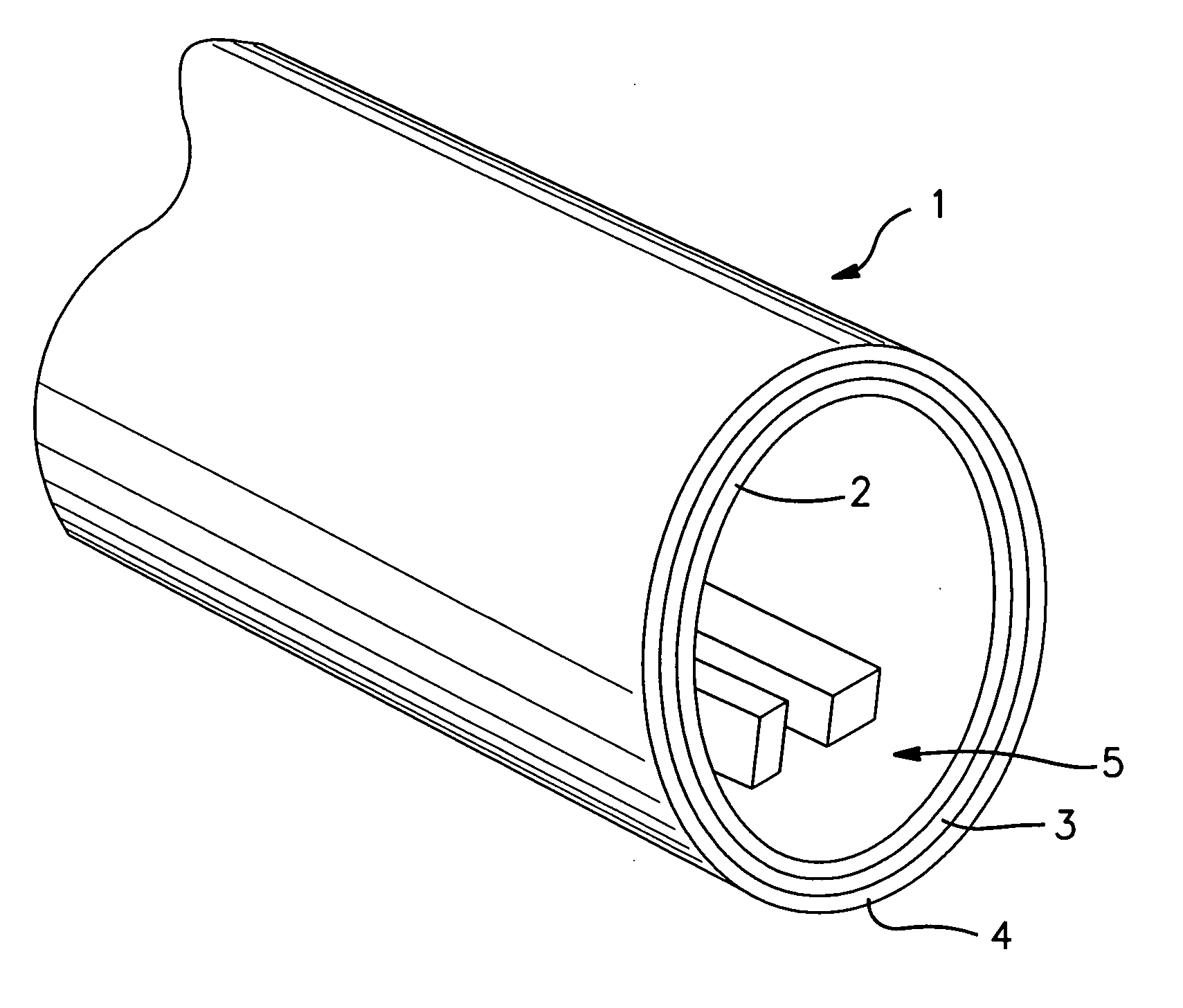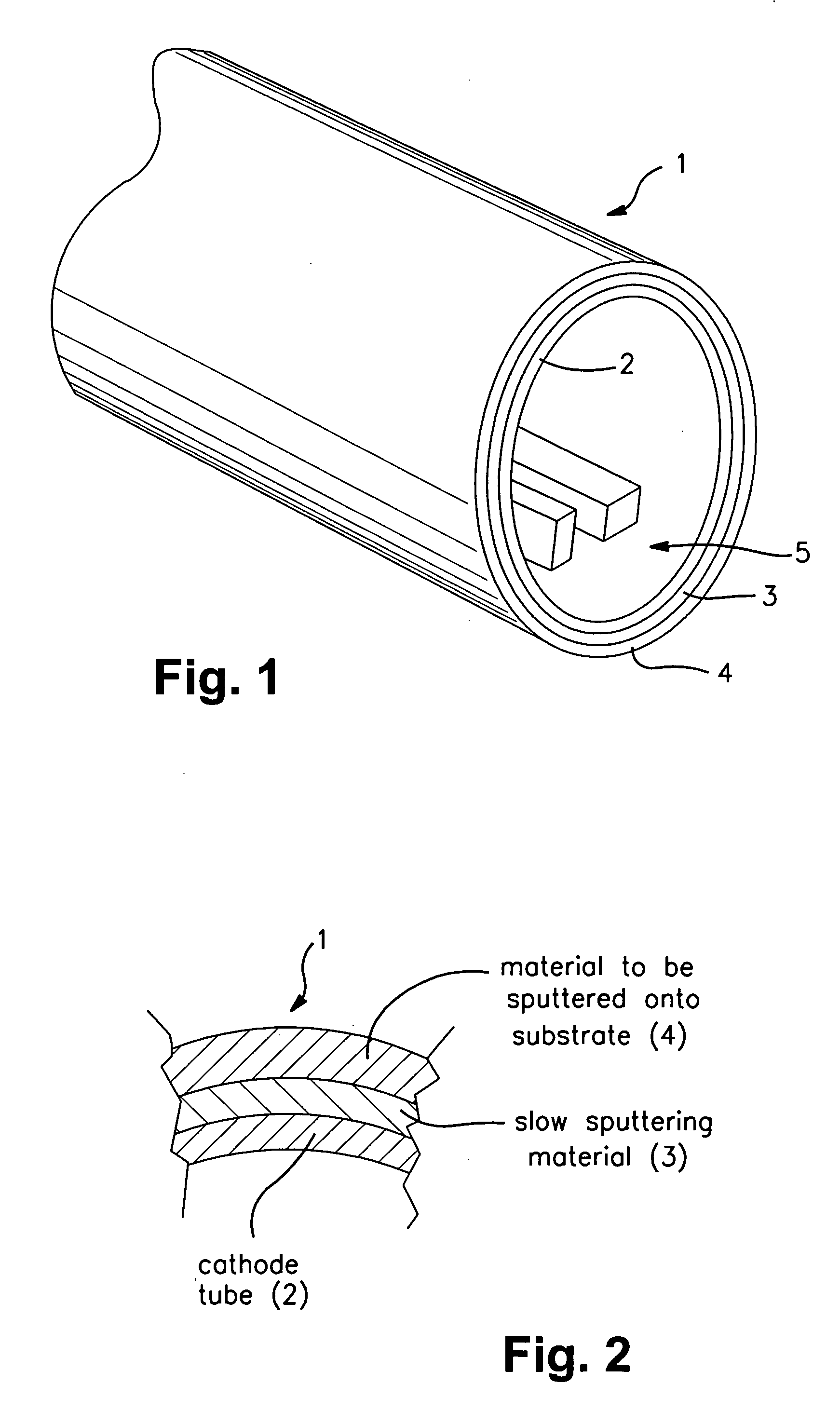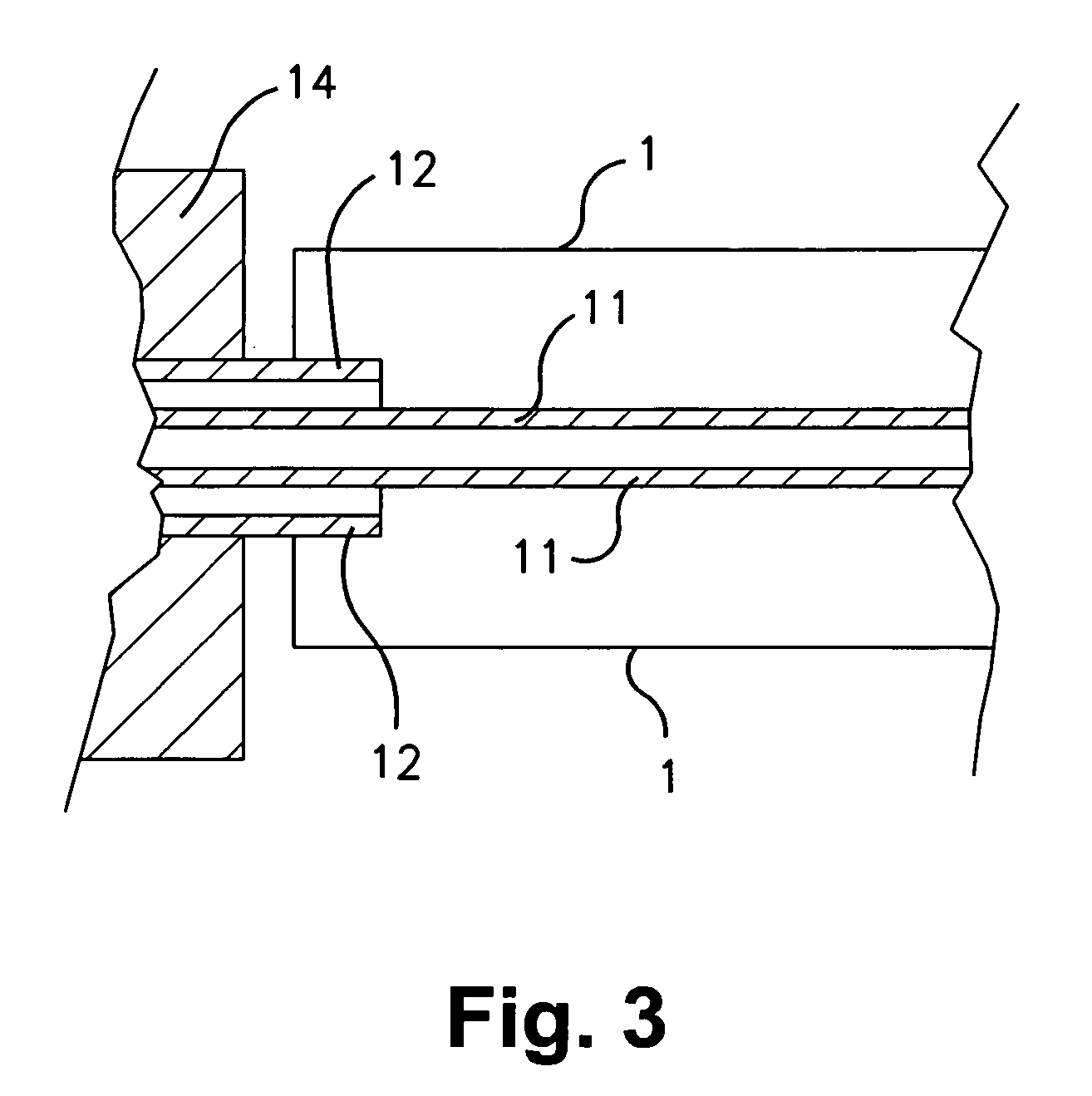Sputtering target with slow-sputter layer under target material
a target material and sputtering technology, applied in the direction of electrolysis components, vacuum evaporation coatings, coatings, etc., can solve the problems of undesirable burn-through, uneven or non-uniform erosion of sputtering material from the tube, contamination of the sputtered film on the substrate, etc., to reduce the risk of burn-through, increase the utilization and/or lifetime of the target, and prevent or reduce the likelihood of burn-through
- Summary
- Abstract
- Description
- Claims
- Application Information
AI Technical Summary
Benefits of technology
Problems solved by technology
Method used
Image
Examples
Embodiment Construction
[0016] Referring now more particularly to the accompanying drawings in which like reference numerals indicate like parts throughout the several views.
[0017]FIGS. 1-2 illustrate an example sputtering target according to an example non-limiting embodiment of this invention, with FIG. 2 being a cross-sectional view of a part of the target of FIG. 1. The illustrated cylindrical rotating target 1 includes a cathode tube 2 with a slow sputtering material 3 applied thereto prior to application of the target material 4 to be sputtered onto the substrate. Thus, the slow sputtering material 3 is on the tube 2, and is located between the cathode tube 2 and the target material 4 to be sputtered. Both the slow sputtering material 3 and the material 4 to be sputtered are on and supported by the cathode tube 2. Materials 3 and 4 may be formed on the tube 2 in any suitable manner (e.g., via plasma spraying). The use of the slow sputtering material 3 between the cathode tube 2 and the material 4 to...
PUM
| Property | Measurement | Unit |
|---|---|---|
| thickness | aaaaa | aaaaa |
| thickness | aaaaa | aaaaa |
| thickness | aaaaa | aaaaa |
Abstract
Description
Claims
Application Information
 Login to View More
Login to View More - R&D
- Intellectual Property
- Life Sciences
- Materials
- Tech Scout
- Unparalleled Data Quality
- Higher Quality Content
- 60% Fewer Hallucinations
Browse by: Latest US Patents, China's latest patents, Technical Efficacy Thesaurus, Application Domain, Technology Topic, Popular Technical Reports.
© 2025 PatSnap. All rights reserved.Legal|Privacy policy|Modern Slavery Act Transparency Statement|Sitemap|About US| Contact US: help@patsnap.com



